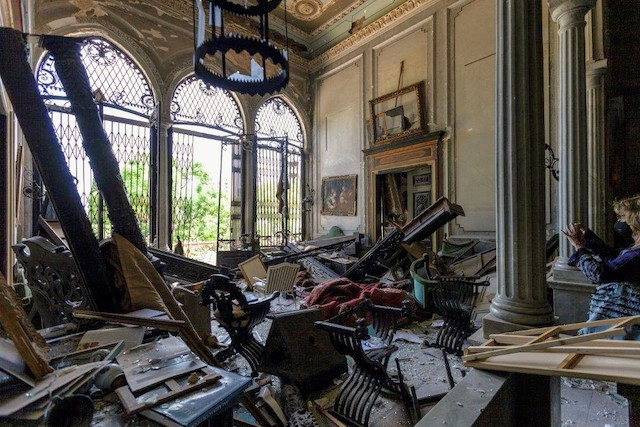Like many Beirut structures, the 19th century Sursock Palace was severely damaged as a result of the explosion that rocked the city’s port on 4 August and the aftermath. Stained glass in the palace was broken. There were massive structural damages, including to the roof. Paintings and other works of art--part of three generations’ worth of Sursock family collection--were dislodged or knocked down.
It’s this flagship project, a restored Sursock Palace Museum and Cultural Centre, that Luxembourg-based Didier Goossens and his five other RestArt Beirut co-founders--based in Beirut, Paris, London and Lausanne--are first focusing on. If all goes as planned, the team envisions restoring this palace back to its glory, with its Ottoman décor and European elegance, which they see in turn driving the economic and social development of a hard-hit city.
Goossens told Delano that the team recognised there were “bigger, more competent organisations” to help out with the larger humanitarian needs, but nevertheless they wanted to help in some way. “We saw there was a less visible emergency, and that is the loss of Beirut’s art heritage that was at risk in those buildings that were, and are, still at risk of collapsing, and also the priceless art collections that lay among piles in those buildings.”
As a first step, the fund will focus on emergency measures for the collection, including identification of the highest-risk items, and supporting emergency needs thereof, such as environmental control and handling. Following that will be an inventory and technical assessment. For this purpose, “we’re ready to send students there in early February,” Goossens explained. It’s this sort of expertise and relationship-building the team is looking for in addition to donors.
Funds raised will then be allocated toward the actual museum concept, planning and displaying the collection to international standards. Goossens says the team has support from the Sursock family to help in the conservation of the palace, which he calls “a symbolic place for Beirut’s Golden Age”. As part of RestArt Beirut’s communication strategy--and as an additional way to give transparency to donors--Goossens says the plan is to make the collection accessible not just for visitors to the physical site “but worldwide”, for example digitally, through social media. “This is about cultural heritage, not just Lebanon.”
Over the longer term, the team envisions the fund being applied to monitoring and management, as well as other activities such as educational workshops, conservation studios, staff training, even artist residencies with local and international partnerships. Although the team has outlined a four-year objectives timeframe, Goossens admits it is difficult to pinpoint when exactly the restored museum could open, given that an inventory is first required to determine how much damage has been done, what type of restoration is required, and so on. And, of course, it depends how much donors decide to back the project, although he says any amount, however small, is welcome. The website’s donation functionality is expected to be up and running over the next weeks, but those interested can already get in touch with the team members. But if he is optimistic? “I’d like to say at least a year, a year-and-a-half. This might be realistic, but there are so many unknowns.”
RestArt Beirut has been structured under the aegis of the King Baudouin Foundation of Belgium which Goossens calls “a well-known, very serious organisation [which] will guarantee rigorous financial oversight and total transparency of the usage of the funds.” It also allows for patrons in Europe and North America to benefit from tax deductions.
For more information, visit the RestArt Beirut website.
